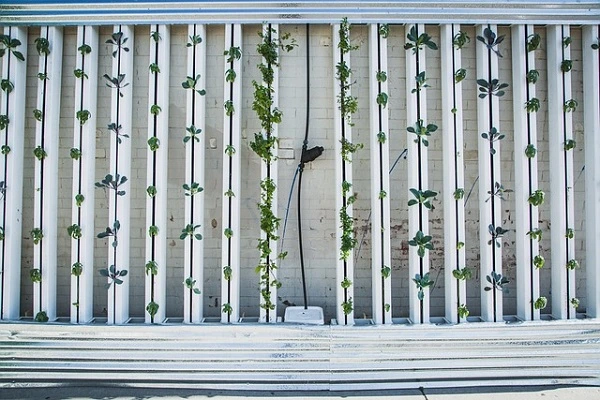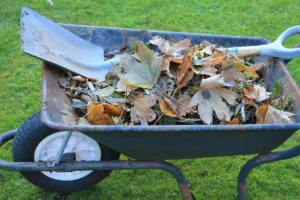Indoor gardening can be a challenge, especially if you’re working with limited space. Traditional potted plants take up valuable room, and finding the right balance of light, water, and nutrients can be tricky. If you’ve ever wanted to grow your own fresh herbs, greens, or even small fruits indoors but felt restricted by space, a vertical hydroponic garden might be the perfect solution.
Unlike traditional gardening, vertical hydroponic systems allow plants to grow upward instead of outward, making them ideal for small apartments, kitchens, or even office spaces. By using a soil-free system where plants absorb nutrients directly from water, you eliminate messy soil, reduce water waste, and encourage faster, healthier plant growth. Plus, with the right setup, you can enjoy fresh produce year-round, regardless of the season.
In this article, we’ll explore the benefits of a vertical hydroponic garden, different system options to suit your space, and a step-by-step guide to setting up your own indoor garden. Whether you’re a seasoned gardener or a beginner looking to start small, this guide will help you create a thriving hydroponic system that maximizes space while providing fresh, homegrown food. Let’s dive in!
Benefits of a Vertical Hydroponic Garden Indoors
If you’ve ever felt like you don’t have enough space to grow your own food, a vertical hydroponic garden might be the perfect solution. Unlike traditional gardening, which requires horizontal space for soil beds or pots, a vertical system grows plants upward, making it ideal for small apartments, kitchens, or even office spaces. By stacking plants vertically, you can maximize every inch of available space while still producing fresh, healthy greens, herbs, and even fruits.
Beyond saving space, hydroponic gardening is also incredibly water-efficient. Traditional soil-based gardening often wastes water due to evaporation and runoff, but hydroponic systems recirculate water, using up to 90% less than conventional methods. This not only conserves water but also reduces the amount of daily maintenance needed—no more worrying about inconsistent watering schedules or dry soil.
Another major benefit is faster plant growth and gardening all year. Since hydroponic plants receive nutrients directly from the water, they don’t have to waste energy searching for them in the soil. This leads to quicker growth, higher yields, and healthier plants overall. Plus, when growing indoors, you’re not limited by seasons—you can enjoy fresh produce any time of the year, regardless of the weather outside.
With efficient space use, reduced water consumption, and the ability to grow fresh food year-round, an indoor vertical hydroponic garden is a smart and sustainable choice for anyone looking to bring a little greenery into their home.
Choosing the Right Vertical Hydroponic System for Your Indoor Space
Setting up a vertical hydroponic garden indoors is an exciting way to grow fresh produce, but choosing the right system for your space is key to long-term success. There are a few different styles to consider, each with its own benefits depending on your setup and goals.
Types of Vertical Hydroponic Systems
- Tower Systems – These are freestanding, column-like structures where plants grow around a central tower. They’re great for small spaces since they take up minimal floor area while maximizing vertical growth.
- Wall-Mounted Setups – If you have limited floor space, a wall-mounted system allows you to grow plants vertically on a wall. This setup works well for herbs and small leafy greens.
- Shelving Units – These systems stack multiple rows of plants on shelves with built-in hydroponic trays. They provide more growing space while still being compact enough for an indoor setting.
Key Factors to Consider
When selecting the best system, think about:
- Space Availability – Do you have room for a freestanding tower, or would a wall-mounted or shelf system fit better?
- Lighting – If natural light is limited, you may need LED grow lights to keep plants healthy.
- Plant Types – Different systems support different plants. Towers and shelves work well for leafy greens and herbs, while wall-mounted setups are best for smaller plants with shallow roots.
Best Plants for Indoor Hydroponic Gardening
If you’re growing indoors, choose plants that thrive in a hydroponic system with limited space. Some of the best options include:
- Leafy greens – Lettuce, spinach, kale
- Herbs – Basil, mint, cilantro, thyme
- Small fruits – Strawberries, cherry tomatoes
- Microgreens – Fast-growing, nutrient-packed greens
Choosing the right system for your space and needs will set you up for a successful and productive indoor hydroponic garden. Whether you opt for a tower, wall-mounted setup, or shelving unit, there’s a system that can fit perfectly into your home.
Setting Up Your Indoor Vertical Hydroponic Garden
Now that you’ve chosen the right hydroponic system for your space, it’s time to set it up. While the process may seem technical, it’s actually quite simple when broken down into steps. With the right materials and a little patience, you’ll have a thriving indoor vertical hydroponic garden in no time.
Essential Materials
Before getting started, gather the following:
- Grow lights – Essential if natural light is limited; LED full-spectrum lights work best.
- Water reservoir – A sturdy container to hold the nutrient solution.
- Nutrient solution – A mix of essential minerals that replace soil nutrients.
- Net pots – Small containers that hold plants and allow roots to grow through.
- Hydroponic growing medium – Clay pebbles, rock wool, or coco coir to support plant roots.
- Water pump and tubing – Necessary for circulating water in most systems.
Step-by-Step Guide to Assembling the System
- Set up the structure – Assemble your chosen system, whether it’s a tower, wall-mounted frame, or shelving unit. Secure it properly to prevent tipping.
- Install the water reservoir – Place the reservoir at the base and connect the pump and tubing to circulate water through the system.
- Position the grow lights – If your garden isn’t near a bright window, hang LED grow lights 12–18 inches above the plants to ensure proper light exposure.
- Add the growing medium and plants – Fill net pots with a hydroponic medium and place seedlings or cuttings inside.
- Mix and add the nutrient solution – Follow the instructions on your hydroponic nutrients and adjust the pH level to 5.5–6.5 for optimal plant absorption.
- Test the system – Turn on the pump, check for leaks, and ensure water flows properly through the setup.
Tips for Optimizing Light Exposure and Airflow Indoors
- Place grow lights on a timer to mimic natural daylight cycles (12–16 hours per day).
- Ensure proper air circulation by placing a small fan nearby to prevent mold and strengthen plant stems.
- Rotate plants if necessary to ensure even light exposure.
Maintenance and Troubleshooting of Indoor Garden Spaces
Once your indoor vertical hydroponic garden is up and running, regular maintenance is key to keeping your plants healthy and thriving. A little routine care goes a long way in preventing common issues like nutrient imbalances, clogged pipes, and mold growth. Here’s how to keep your system in top shape.
Regular Water and Nutrient Checks
Since hydroponic plants rely on nutrient-rich water rather than soil, it’s important to monitor water levels and nutrient concentration regularly. Check the reservoir every few days to ensure it’s not running low, and replace the nutrient solution every one to two weeks to prevent salt buildup.
Maintaining the correct pH level (5.5–6.5) is also essential. A pH that’s too high or too low can block nutrient absorption, leading to slow growth or yellowing leaves. Use a pH testing kit and adjust levels as needed with pH up/down solutions.
Preventing Common Issues
- Mold and Algae Growth – Excess moisture and light exposure can lead to mold or algae in your system. Keep water reservoirs covered, use opaque tubing, and ensure good airflow around your plants.
- Clogged Pipes and Pumps – Mineral deposits or root overgrowth can block water flow. Clean your system monthly, trim any overgrown roots, and flush tubing with water to prevent buildup.
- Slow or Weak Growth – Poor lighting, low oxygen levels, or incorrect nutrients can slow plant development. Make sure grow lights are positioned correctly, aerate water with an air stone if needed, and stick to the proper nutrient mix for your plants.
Maximizing Plant Health and Productivity Indoors
To get the best results, make sure your plants receive enough light, proper spacing, and fresh air circulation. A small fan can help prevent humidity buildup and strengthen plant stems. Also, pruning dead or overgrown leaves encourages new growth and better yields.
Conclusion
Creating a vertical hydroponic garden indoors is one of the best ways to grow fresh, healthy produce in a limited space. By taking advantage of vertical growth, you can cultivate a variety of plants without needing a large outdoor garden. Plus, with efficient water use, faster plant growth, and year-round production, hydroponics offers a practical and sustainable alternative to traditional gardening.
If you’ve been thinking about starting your own system, now is the perfect time to give it a try. Whether you choose a tower, wall-mounted setup, or shelving unit, there’s a system that can fit your space and needs. Start with easy-to-grow plants like lettuce, basil, or strawberries, and as you gain confidence, experiment with other varieties to see what works best.
Gardening—especially hydroponic gardening—is all about learning and adjusting as you go. If you want to dive deeper, be sure to check out our other articles for more tips on choosing the right plants, maintaining your system, and troubleshooting common issues. No matter where you start, the key is to take that first step and enjoy the process of growing your own food indoors. Happy gardening!





Comments
Thanks for posting. I really enjoyed reading it, especially because it addressed my problem. It helped me a lot and I hope it will help others too.